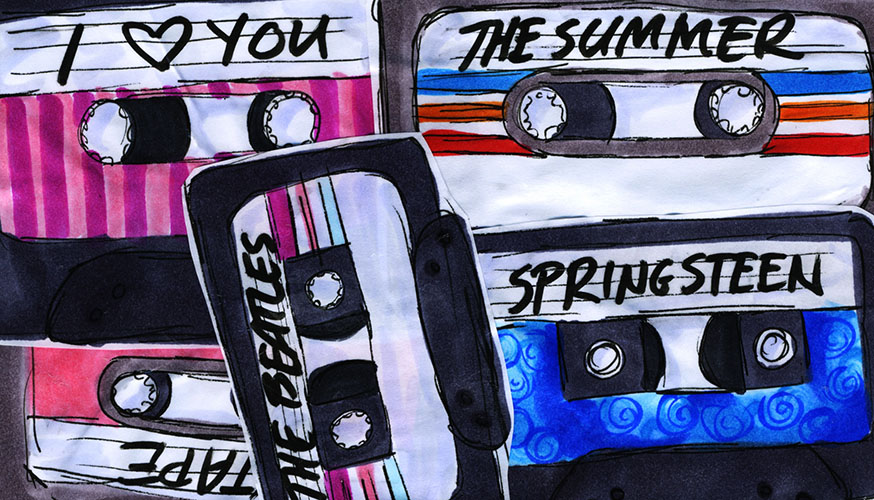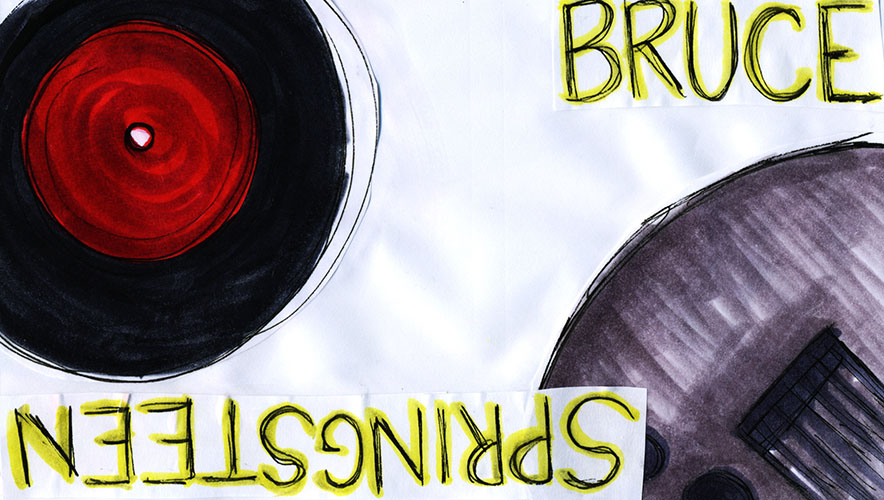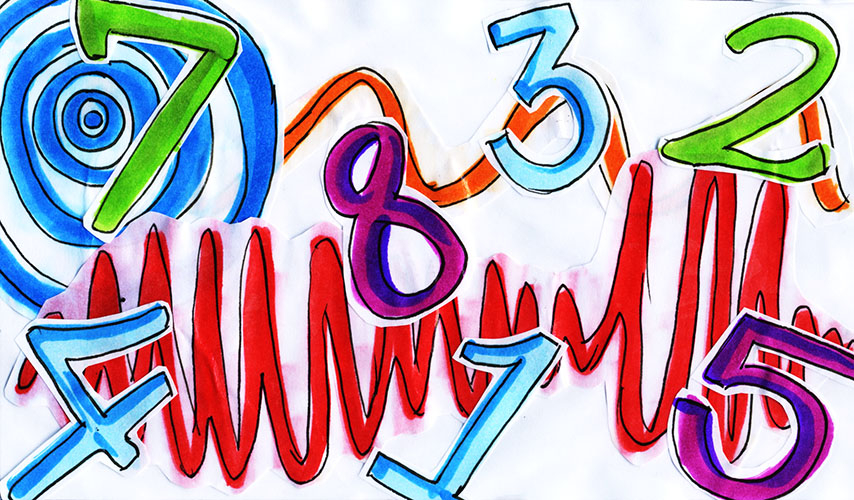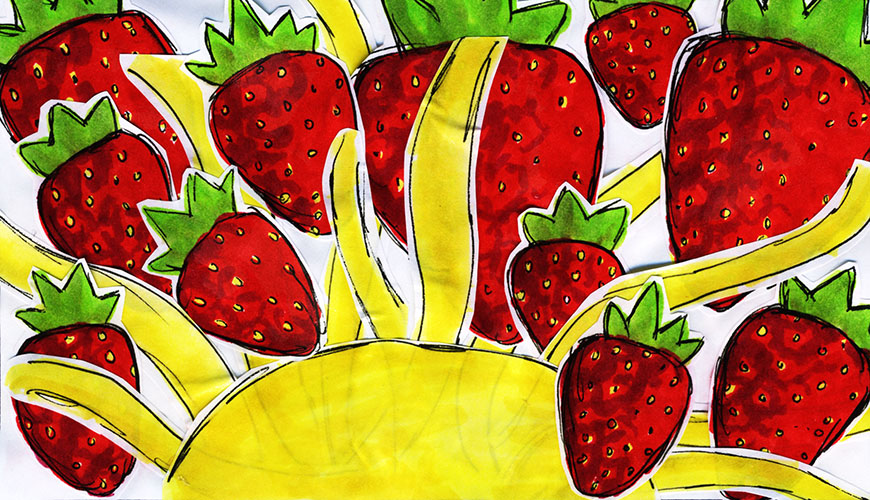My 2004 Toyota Corolla is well-traveled. The dashboard is dusty, the floor mats dirty. Trinkets and toys are tossed about the backseat.
Some 135,000 miles of road have rushed under its wheels. This is the car we brought our daughter home from the hospital after she was born, the car in which I’ve taken countless late-night drives down to Philadelphia, my old hometown. I have never had an accident in it, though there have been close calls that I still shudder to think about, such as that time on I-95 when a careless driver crossed over two lanes of traffic and nearly collided into me. I slammed the brakes and hit the horn. He never looked, never saw me coming.
Driving around in my old, reliable ride, I’m often taken to far, forgotten places. Memories and ghosts swirl about me.
That’s because my Corolla has a tape deck. I realize that the modern world has long gone digital, everyone’s pockets full of seductive devices that can track down any song imaginable with just a few clicks. But I enjoy revisiting my old cassettes, even if finding a particular song involves a patience-testing process of ejecting, flipping sides, fast-forwarding, and rewinding.
I keep my cassettes in the basement, neatly organized in an old cabinet someone had left by the curbside. The tapes are from high school and college, and I have refused to part with them. They are part of my history.
Every once in awhile, I pull a bunch of cassettes from the basement and put them in the Corolla’s glove compartment. To pop them into the tape player and hear them whirl to life is to be transported. I’m 44-years-old, a grown man with a wife, an eight-year-old, and a career, but the music forces me to confront my former selves, so young, awkward, and idealistic.

Not all the memories conjured up are good ones, particularly from high school. I’m reminded of the anxieties of those locker-filled days: the jerks to be avoided, the never-ending homework, the freedom of summer so out of reach, the dramas in the cafeteria and on the bus.
Back then, the music identified your tribe. Rap. Heavy metal. Alternative. These were battle lines not to be crossed. You stuck with your crew of friends and waited for the experience of high school to mercifully pass you by.
“What kind of music do you listen to?” I am asked, sitting in biology class during my freshman year. The kid smirks, waiting to jump on whatever I have to say. He isn’t an enemy of mine, but he isn’t quite a friend either.
I honestly had no idea what to tell him. We were all so unsure of ourselves, so often unkind. Kids were always probing for weakness, for something to mock.
Grunge stormed the radio when I was in high school, but I didn’t identify with much of it. I liked older music. The classic rock station in town, 94.1 WYSP, was always on my stereo.
My favorite artist was Springsteen, but I only knew of a handful of kids in my high school who liked him. Now he’s an elder statesman of rock, but back in the early 1990s, he seemed so out of touch, long past his bandana-wearing glory days.
I fell hard for his music sophomore year. Buying his Born to Run album on a whim, I felt hit by a thunderbolt. I bought the rest of his albums in short order.
With my tape deck at the ready, I often listened to DJ Ed Sciaky, who hosted a weekly “Sunday with Springsteen” radio show. Sciaky was an early champion of Springsteen’s music, playing the artist long before he became a world-conquering rock star.
On his radio show, Sciaky played lots of rare live and studio recordings, and I listened intently, ready to press record at a moment’s notice. Was he about to play something magical, something that would shake the walls of my bedroom? I filled several tapes from Sciaky’s show.
The first time I saw Springsteen in concert I practically teared up when he and the band slammed into the first song. The music was good and true, so much better than what seemed the entire high school was listening to. “I’m right,” I said to myself.

Another favorite was the Beatles. Down in the basement, I came upon my parents’ old records. I felt like an archeologist discovering communications from a distant age. Sgt. Pepper. Magical Mystery Tour. Abbey Road. I made my own Beatles tapes, putting the records on the turntable, dropping the needle and, as the speakers filled with pops and hiss, hitting record on the tape deck.
As a freshman in Spanish class, I was once absent-mindedly singing one of their tunes, and the kid sitting in front of me turned around and demanded, “What song is that?” I didn’t say anything, that fear of being ridiculed ever-present.
Later, in my sophomore year, I find out that the kid actually loved the band as well. We bonded over the music, cementing a friendship that remains to this day.
Good memories also come to me while I listen to my old tapes. I think of my friends and the fun times we shared and the teachers we adored and the girls with all their hair.
Music hit you so hard in high school. It was so personal. Sometimes, the right song felt like it could change your life.
Listening to old mixtapes, I’m reminded of who gave them to me. Check this out, they would say, slipping me tapes that offered the promise of discovery. There was the friend who liked Robert Johnson, and another who liked Tori Amos, and another who fancied himself a DJ and filled a tape with clumsy beats. I still have the 10,000 Maniacs tape my sister made me, the song titles written in her pretty calligraphy.
Making a good mixtape required some thought. You couldn’t just toss a bunch of songs on a tape and call it a day. You had to think about how you would start it. The right song was needed to kick things off and set the mood. You had to think about pacing. Too many fast songs could be repetitive, too many slow tunes could be boring. You had to think about timing. One side of a cassette tape could only fit 30 or 45 minutes of music. To make sure I had enough room for all the tunes I wanted on the tape, I would find out how long each song was and then add up how many minutes they were in total.
Finally, you had to think about the message of your mixtape. Would anyone besides you hear it? If so, was there something, in particular, you wanted to tell them through the music, maybe something you were too shy to say face to face? Sometimes, the songs could do the talking for you.

I never did receive a mixtape from a girlfriend, never had that experience of listening to the perfect songs picked out in the perfect order and trying to discern what someone special was trying to say to me.
But later in life, as a married man, my musical sojourns into the past took an unexpected twist. At my in-laws’ house, I stumbled upon my wife’s old collection of cassettes. Stashed in a cardboard box in the attic, the tapes were earmarked to be thrown out before a move, and so I rescued them. In the Corolla, I now listen to those tapes alongside my own.
I try to picture my wife before she met me, the girl who jammed out to The Clash and The Cure and on the whole had much cooler musical tastes than I did at 14. Some of her tapes are mixes, and listening to them, clueless as to what songs are coming, I wonder who made them for her. Was it a friend, or perhaps a boy trying to woo her with the perfect songs placed in the perfect order?
Girls were a puzzle to me when I was younger, but now I’m left to imagine the life of this teenage girl who was years away from meeting me.
As I listen to all these cassettes in the Corolla, my companion is often my daughter. Taking her to school or dance lessons, I play DJ for an audience of one.
We listen to Tom Petty and the Beach Boys, Elton John and Simon and Garfunkel. Springsteen is always close at hand, the man still as essential to me now as when I was in high school.
We listen to REM, because the ideal audience for the silly “Shiny Happy People” may indeed be an 8-year-old. I pull out Prince, fast-forwarding to “Starfish and Coffee,” one of his rare PG-rated songs, queuing it up to make sure we don’t miss the brrrrring of the school bell that kicks off the song.
When we rock out to U2’s “Where the Streets Have No Name,” my daughter makes an important point. “But daddy,” she tells me from the backseat, “streets do have names.”
The Beatles remain a favorite. We’ll listen to “Hey Jude,” and as the song begins its slow fade, I’ll turn up the volume so we hear every last “na, na, na, na.” I try to queue up “Here Comes the Sun” so as to avoid “I Want You (She’s So Heavy),” the song right before it on Abbey Road, because of its repetitive droning freaks my daughter out a bit.
I explain how the Beatles’ sound changes over time. “Some of their songs get pretty weird,” I say, but my daughter has already noticed. “Nothing is real,” she says, quoting a bit of “Strawberry Fields Forever.”
Later, she will ask about how they broke up, news that the rest of the world has already had some 50 years to digest. “It was a long, long time ago,” I say.

Our rides serve as a musical education. Someday, she’ll find her own songs to sing, songs that will mean so much to her and her friends. But by playing her my old music, she can know what came before, and then add on to that with the music of her own generation, just as I did.
Soon I will need to make tough decision about my aging Corolla. It needs new brakes and tires, maybe a radiator. Two hubcaps have popped off. To replace one, I picked up a random hubcap lying by the side of the road, even though it didn’t match the others. I never did bother to replace the other missing one.
I tell my daughter that newer cars don’t have tape decks. No one listens to cassettes anymore, I say.
She mentions the little boom box in her room, the one she uses to listen to Harry Potter audio books and the Mary Poppins soundtrack. The boom box has a tape deck. “Dad, you can use it if you want,” she says.
“That’s nice of you to offer. Thank you.”
For now, the Corolla rides on, my daughter and I still enjoy the music together. To hear her singing along to the old songs is surreal. These tapes were first listened to long before she was born when I was basically just a kid myself trying to figure out the world.
Listening to the old tapes now as a grown man, I’m relieved that no one is waiting to judge my music anymore. I can like whatever I want. High school is thankfully over, though admittedly, only to a point. Some bad feelings linger even after all this time. My 25th reunion was last year, and never for a moment did I entertain a thought of going.
But when the music plays and those old ghosts from high school gather about me, I tell them that everything turned out fine, that I now have a nice life far removed from all those old concerns, and that in the backseat, my wonderful daughter sings the songs that I’ve always loved so much. •




